 Leading Blog | Posts by Month |
 Leading Blog | Posts by Month |
06.30.22

Leading Thoughts for June 30, 2022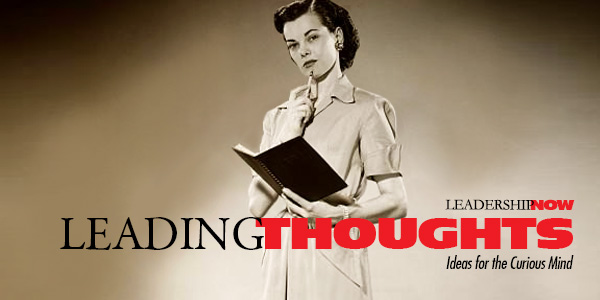
IDEAS shared have the power to expand perspectives, change thinking, and move lives. Here are two ideas for the curious mind to engage with: Scientist Marie Curie on the importance of self-improvement for the betterment of self and others: “You cannot hope to build a better world without improving the individuals. To that end, each of us must work for his own improvement, and at the same time share a general responsibility for all humanity, our particular duty being to aid those to whom we think we can be most useful.” Source: Pierre Curie (Autobiographical Notes)
Thomas Mitchell, a farmer, on productivity: “It is wonderful how much work can be got through in a day, if we go by the rule—map out our time, divide it off, and take up one thing regularly after another. To drift through our work, or to rush through it in a helter-skelter fashion, ends in comparatively little being done. ‘One thing at a time’ will always perform a better day’s work than doing two or three things at a time. By following this rule, one person will do more in a day than another does in a week.” Source: Essays on Life by Thomas Mitchell, Farmer Look for these ideas every Thursday on the Leading Blog. Find more ideas on the LeadingThoughts index.
Posted by Michael McKinney at 02:03 PM

LeadershipNow 140: June 2022 Compilation
See more on
Posted by Michael McKinney at 06:32 AM
06.27.22

Emotion By Design: Creative Leadership Lessons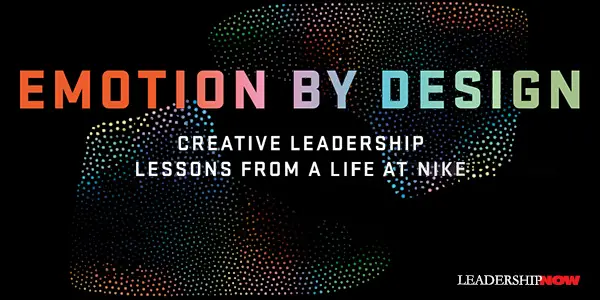
EMOTION moves people and creates attachment. A brand that constructs powerful emotional bonds with its consumers generates a reaction that gives it a unique competitive advantage. It is emotion by design. In Emotion by Design, former Nike global brand leader Greg Hoffman says that “art and marketing can fulfill the same ends, and should often try to fulfill the same ends.” Guiding that idea is the understanding that “art only moves people when they feel inspired or heard or driven to excellence.” As brand marketers, our job is to show the world to our audience in novel, insightful, and at times provocative ways. We do this with our ability to see the insights and the truths that others miss, and reveal those insights and truths to our audience through the means of images, films, campaigns, architecture, and products. Whatever the medium, we share our brand’s values and purpose through insightful stories that move our audience, that elicit a specific emotion, and that build lasting bonds between consumer and brand. It all begins with empathy. “Our ability to understand and share the feelings of someone else is what allows us to get to the deeper truths and begin fashioning a story around them.” And, of course, curiosity. “Curiosity is the catalyst for creativity. It’s what allows you to see opportunities and harness the inspiration to seize them.” It’s about getting outside yourself. Reaching people in new and different ways requires some risk. Many leaders are uncomfortable with the creative risk-taking and rein it in before it even gets started. But to create that emotional bond with your consumers, you need to cultivate a culture of risk-taking. While this doesn’t mean throwing all caution to the wind, it does mean that you incentivize it. “Does an organization actively reward bold ideas? Does the leadership team make time to listen to those ideas? If an unconventional idea doesn’t work, are the creators encouraged to try again?” For Hoffman, that means not playing safe but playing to win. To lead from the front and let your competition react. He notes that “Innovation breakthroughs are rarely created with caution.” And importantly, “We do not take risks because we want to try something new. We take risks because we want to create new modes of thought, of communication, of engagement. We take risks because the world never stops turning and the consumer’s expectations never stop expanding.” What do consumers see when they see you? It is an ongoing story. “The best stories have one thing in common: They touch on the human imagination and elicit an emotional response.” In example after example, he gives a behind-the-scenes look at how the team at Nike did just that—communicated their story in a way that connected with different people in different contexts. Their “Find Your Greatness” campaign redefined what it meant to be great for each one of us, and it expanded their relatability. Hoffman advises that we should not chase cool. “There are cool trends, but no one’s created an icon by following a trend. You create an icon by starting a trend. If you chase one, then you’re probably trying to be something you’re not—and consumers are experts on exposing inauthenticity.” Be who you are, and get cool to chase you. One way to do this is to “play in the intersections.” Be curious. “Don’t stay in your lane. Merge into other currents that share your brand values. By crossing paths with the worlds of art, music, and beyond, you can invite new consumers into your brand and, in turn, have a greater impact on culture.” If you’re looking for inspiration and greater impact, Emotion by Design will get you looking in the right direction and help you to spark your own revolution. 
Posted by Michael McKinney at 01:54 PM
06.24.22

Connecting Your Employees to a Higher Purpose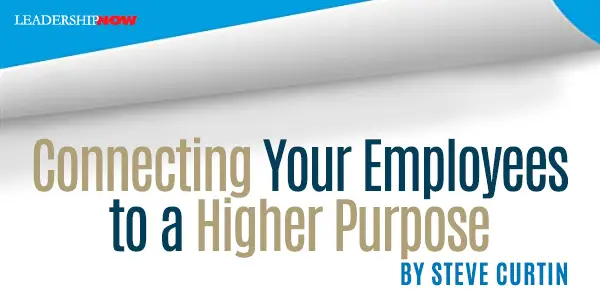
IN 2016, I had an experience while working with a sophisticated, billion-dollar technology company that, for me, was a seminal moment. I was invited to speak to a group of senior managers at the company’s annual leadership summit on the topic of connecting to purpose at work. My client and I devised a quick activity to determine how many of the 222 leaders in attendance could recall the company’s single-sentence corporate mission statement. Prior to my presentation, we distributed index cards to all participants. We asked them to record the one-sentence mission statement on the card from memory, without the aid of a smartphone or the colleagues seated next to them.. Guess what we discovered? Only 4 of the 222 leaders in attendance (less than 2%) could accurately recall the company’s pithy guiding statement. Thirty-four participants (15%) left their cards blank or answered with a question mark. One senior manager thought it was a trick question and wrote, “As far as I know, we don’t have a corporate mission statement right now.” This experience reinforced an observation that has directed my work’s focus ever since: Although organizations consistently develop corporate mission, vision, and purpose statements, leadership is inconsistently able to recall them. As a result, leaders are unable to reveal these corporate ideals to employees, connect them to employees’ daily work activities, and leverage them to inspire greater employee engagement. Start with Your Organization’s Purpose and Core Values It’s not possible to be purpose-driven if a company’s purpose hasn’t been articulated and communicated at all levels of the organization. So, the first order of business is to articulate organizational purpose followed by a set of core values.. A purpose statement, in its simplest form, expresses why the organization exists—beyond simply making a profit. It may also illustrate how your product or service positively impacts stakeholders. For example, United Airlines’ purpose is “Connecting people. Uniting the world.” This purpose applies universally across all job roles. Whether a pilot who connects passengers between points of origin and their destinations, a mechanic who keeps planes in service, or a reservations agent who facilitates complicated itineraries, all reflect the airline’s raison d'être, its reason for being—connecting people and, in doing so, uniting the world. With a purpose statement in place, you can turn your attention to the core values that guide employees’ actions and behaviors. A word of caution: Too many companies develop imitative lists of core values that are indistinguishable from those of their competitors. Most Fortune 100 companies, for example, claim integrity as a core value, and nearly half tout customer satisfaction and teamwork. While these are inarguably noble values, they don’t distinguish one company from another. Be certain that the core values you adopt reflect your organization’s unique character, culture, and purpose. Once you have a set of solid core values, you should add context to them by expanding them into value statements. These are pithy descriptions of how your organization interprets its values. Each value statement is further described by behaviors that demonstrate the value in action in employees’ real world of work. Here’s an example:
It would be difficult for an employee or vendor partner to repeatedly miss deadlines in an organization that has codified behavioral expectations related to honoring commitments. Completing this activity will immediately separate your organization from the vast majority that merely post their values on their websites and enshrine them behind framed panes of glass in executive corridors. It will also convey to employees and other stakeholders that you’ve thought about how your organization uniquely interprets and applies its values. Bring Purpose and Core Values to Life Whether your organization has a long-established purpose and set of core values or these standards have recently been put into words, the next step is to consider how to transfer these ideals from corporate headquarters’ ivory tower of theory and abstraction to employees’ real world of work. Think back to the senior managers who attended my client’s annual leadership summit: less than 2% could recall the company’s one-sentence mission statement. This figure was so low because company leaders were disconnected from the organization’s purpose. It was too far removed from the reality of their workdays. And if they were distanced from it, then you can bet frontline employees were equally aloof. The mistake this company made was assuming that crafting a mission statement and set of core values, inserting them in the employee handbook, and posting them on the corporate website meant they were done. Not true. It’s a bit like buying a Peloton exercise bike and a keto diet cookbook, displaying them conspicuously in your home, and not using them. Nothing will change unless you act. Link Corporate Ideals to Employees’ Daily Responsibilities Supervisors, managers, and leaders must build a bridge between an organization’s purpose and values and the actual work assignments employees are paid to perform. This is accomplished by incorporating purposeful actions and behaviors into daily work activities. Here are some examples:
It’s not enough to articulate your organization’s purpose and core values. You must bring these guiding principles to life by revealing them to employees, clarifying their meaning, and labeling behaviors that support these ideals. Next, incorporate specific actions and recommended behaviors into the processes that govern employees’ daily work. You’ll yield greater employee engagement, higher customer satisfaction scores, and employees at all levels of the organization who are genuinely connected to a purpose.  
Posted by Michael McKinney at 08:34 AM
06.23.22

Leading Thoughts for June 23, 2022
IDEAS shared have the power to expand perspectives, change thinking, and move lives. Here are two ideas for the curious mind to engage with: Engineer, designer, entrepreneur, and investor, Tony Fadell on becoming a manager: “Remember that once you become a manager, you’ll stop doing the thing that made you successful in the first place. You will no longer be doing the things you do really well—instead you’ll be digging into how others do them, helping them improve. Your job will now be communication, communication, communication, recruiting, hiring and firing, setting budgets, reviews, one-on-one meetings (1:1s), meetings with your team and other teams and leadership, representing your team in those meetings, setting goals, and keeping people on track, conflict resolution, helping to find creative solutions to intractable problems, blocking and tackling political BS, mentoring your team, and asking ‘how can I help you?’ all the time.” Source: Build: An Unorthodox Guide to Making Things Worth Making
Former Nike Chief Marketing Officer Greg Hoffman on passion: “Passion is a risk-taking emotion because it demands that we reveal so much of ourselves to others. If you’ve ever found yourself in a conversation with someone about their passion, then you know what I mean. You can feel it; they get carried away. And when they finally stop talking, they can be a little embarrassed. But that’s good. Show that to your audience. Imbue your brand, your stories, your spaces with passion unbridled. Start talking about what you love and don’t ever stop.” Source: Emotion By Design: Creative Leadership Lessons from a Life at Nike Look for these ideas every Thursday on the Leading Blog. Find more ideas on the LeadingThoughts index.
Posted by Michael McKinney at 06:36 AM
06.20.22

10 Books You Should Read This Summer
HER FATHER was an Olympic athlete, and her mother a physical education instructor. And unlike her siblings, Grace Kelly preferred reading to physical activity. Although her father was well-read, her proclivity to read didn’t always sit well with her father. He wanted her to be more athletic. At school, she was encouraged to read widely. And she did. And we should too. For me, reading some fiction is like taking a walk. It provides a diversion that gives your mind a chance to think through what you’ve been reading and learning. Especially for leaders, reading outside the normal leadership fare helps to provide you with context for your leadership. Reading fiction, histories, and biographies builds empathy and provide insights into human nature. While I like just about everything from David Baldacci, like his latest Dream Town, I also like to go back and read classics from authors like John Steinbeck. Wally Bock recommends that we take this time to read something we’ve always wanted to read, something to read for fun, and something we’ve never read about or that really stretches our brain. He even provides a helpful, downloadable sheet to help organize our list. With a few extra hours of daylight, the summer is an ideal time to relax and read. Listed below are ten books released this year that will entertain, make you think, and improve your leadership. Pick at least three and take some time to make yourself better this summer.
And I can’t leave out Build. If you’re looking for business or career wisdom, this is the book to turn to now.
Posted by Michael McKinney at 06:22 AM
06.16.22

Leading Thoughts for June 16, 2022
IDEAS shared have the power to expand perspectives, change thinking, and move lives. Here are two ideas for the curious mind to engage with: Amor Towles’ character Count Alexander Rostov on withholding judgement: “The Count had to acknowledge once again the virtues of withholding judgment. After all, what can a first impression tell us about someone we’ve just met for a minute in the lobby of the hotel? For that matter, what can a first impression tell us about anyone? Why, no more than a chord can tell us about Beethoven or a brushstroke about Botticelli. By their very nature, human beings are so capricious, so complex, so delightfully contradictory, that they deserve not only our consideration, but our reconsideration--and our unwavering determination to withhold our opinion until we have engaged with them in every possible setting at every possible hour.” Source: A Gentleman in Moscow: A Novel
Yale law professor Stephen L. Carter on rights and civility: “If we fail to distinguish desire from right, we will not understand that rights are sensible and wise only within particular contexts that give them meaning. The Constitution protects a variety of rights, but our moral norms provide the discipline in their exercise. Sometimes what the moral norm of civility demands is that we restrain our self-expression for the sake of our community.” Source: Civility: Manners, Morals, and the Etiquette of Democracy Look for these ideas every Thursday on the Leading Blog. Find more ideas on the LeadingThoughts index.
Posted by Michael McKinney at 02:44 PM
06.13.22

Building Trust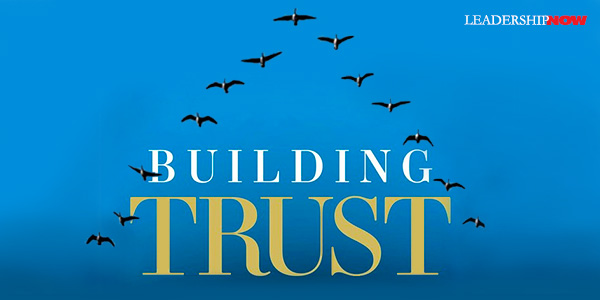
TRUST is what holds relationships together, and therefore it is vital to families, groups, and organizations. Of course, trust is a two-way street. Not only must we be trustworthy, but we must extend trust to others. As leaders, we build trustworthiness in others by first extending trust to them. Trust is based on our behavior. We can behave our way into trust, and we can behave our way out of trust. Understanding the bases of a trust decision can help us to build trust and recover when we have been untrustworthy. The following model introduced by Darryl Stickel in Building Trust: Exceptional Leadership in an Uncertain World, helps us to do that.
The model begins with the bases of trust. When deciding whether to trust or not, people ask two questions: How likely am I to be harmed a (perceived uncertainty) and if I am harmed, how badly will it hurt (perceived vulnerability). When combined they give an idea of our perceived risk. And spending on our risk threshold, we make a decision on whether the trust is worth it. “Our risk threshold, or willingness to trust, comes from a combination of our cultural background, personal traits, and experiences.” Our perceived uncertainty of another person may go down as we get to know them, and as a result, we may be more willing to be more vulnerable with them. But emotions also come into play. Our emotions act like a filter and influence our judgment. The more extreme our emotions—love or hate—the less rational we are. Our emotions affect our trust decision and even the outcome we expect. At the same time, we may trust someone in one context but not another. Change the context, and the perceived uncertainty and vulnerability changes too. We can increase our trustworthiness—our perceived uncertainty—by addressing three factors: Do you have my best interests at heart? (Benevolence), Do you follow through on commitments? (Integrity), and Can you do the job? (Ability). When it comes to vulnerability, scarcity (what do I have to lose?), the stakes (what do I feel is at stake?), and value (what value do I place on the stakes?). 
Posted by Michael McKinney at 07:24 AM
06.09.22

Leading Thoughts for June 9, 2022
IDEAS shared have the power to expand perspectives, change thinking, and move lives. Here are two ideas for the curious mind to engage with: INSEAD professor Manfred F. R. Kets de Vries on the importance of being kind: “Quite often, when people are hurting others, it is because they are hurting themselves. This does not mean that you should try to explain it away, that you should try to justify and rationalize inappropriate behavior. The decision to set boundaries concerning certain behavioral patterns is part of being morally responsible. Still, in trying to understand why these people are doing what they are doing, you could also keep in mind the words of Carl Jung: ‘Everything that irritates us about others can lead us to an understanding of ourselves.’ It may give you additional insights about what is happening as we all have a tendency to project unwanted parts of ourselves on to the other. It is far too easy to deposit on the other aspects of our shadow side—to use the other as some kind of ‘garbage can.’” Source: Leading Wisely: Becoming a Reflective Leader in Turbulent Times Darryl Stickel on the growing cynicism surrounding leadership: “As the world evolves, our expectations of leaders seem to be getting broader and increasingly contradictory. Ultimately, we tend to trust those who have strong abilities and demonstrate excellence in their field. Are leaders supposed to give us decisive direction? Be consensus builders? Inspire us? The answer to all of these is yes, but how are they supposed to do that in environments where those judging leadership qualities appear to agree on so little? Also, our definition of leadership excellence changes with different situations. The challenge we have is that if we don’t clearly define excellence for leaders, it is almost impossible for them to strive for it.” Source: Building Trust: Exceptional Leadership in an Uncertain World Look for these ideas every Thursday on the Leading Blog. Find more ideas on the LeadingThoughts index.
Posted by Michael McKinney at 06:57 AM
06.08.22

The Role of Wellness in Leadership Development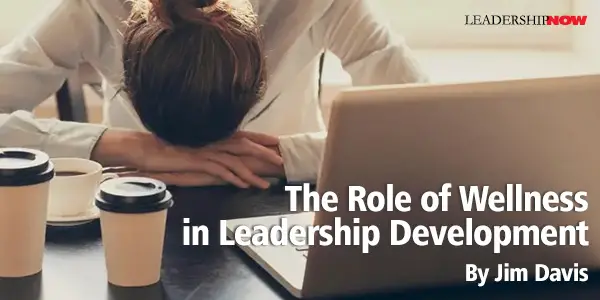
IS IT POSSIBLE that we overlook the role of the body in our professional lives? Habits of health and wellness play a larger role in workplace culture than one might initially think. In a recent article for Northwestern University’s Leadership Magazine, I highlighted a client, “Brian,” who was working his tail off but fell into a state of exhaustion. At first, it was hard to name. He was doing everything he thought he was supposed to. Working late, trying hard, committing fully to his organization and the people around him. Slowly, his motivation waned. He became more irritable and less satisfied with his work; communication broke down, and stressors stacked up. From the article: “he had raised his voice at a coworker, sent an angry message to his wife, and was caught in the fumes of varied frustration. Things seemed to be crumbling around him. By noon he decided to call off for the day. He had not taken a sick day in years. He says he does not remember the drive home, but he does remember making himself some tea and sitting down on the couch. The tea was too hot, so he set it down for a moment. The next thing he remembers is waking up in the dark, laying down now, after an unintentional five-hour nap. He brushed his teeth, went to bed, and slept through the night. The next day he was fine. Simply, Brian was exhausted. Sometimes we use the term ‘exhausted’ to describe a long day, to add emphasis to our fatigue. Brian was actually exhausted – drained of physical and mental capacity. In this state, physical and emotional health fail, as do our relationships and our potential to lead.” Brian’s experience was relatively benign. But when a steady state of exhaustion persists for a career, the outcomes can be far worse. And if the fear of long-term health outcomes is not enough to sway the leader toward prioritizing his or her own wellness, they might want to consider the impact it has on their business. The Impact of Wellness on Workplace Success Brian was part of a leadership team that was focused on strong company culture. We conducted a survey of the leadership team, which catalogs – among other important components of healthy culture – habits of physical health and wellness. As we processed the data, we noticed that one health variable was having a powerful impact on people’s cognitive and emotional state: sleep. We looked closer. We split the group into two categories: Well-Rested (WR) for those with 8+ hours of sleep, and Sleep-Deprived (SD) for those who slept 6.5 hours or fewer. What we found was incredible. Sleep played a major role in KEY areas of the company’s culture: ▪ Negative Stress. Although members of the team were experiencing similar stressors during their workday, the Sleep-Deprived group interpreted those stressors to be 54% more negative than their Well-Rested peers. Same challenge, different perception, and sleep seemed to be a key piece of that difference. ▪ Motivation. The SD group reported 30% lower workplace motivation than the WR group. ▪ Communication. The SD group found it more difficult to maintain optimistic assumptions in communication with their peers, with scores 28% lower than the WR group. Additionally, the WR group found it easier to clarify difficult ideas with their peers than the SD group, reporting scores that were 21% higher than their sleepy peers. Our next step was clear. Before moving on to the complex dynamics of a healthy workplace environment, we had to create goals around sleep health and hygiene. Leaders and teams aim for a leg up on the competition with strategy-based professional development opportunities. Strategy always falls victim to implementation. If a group is not motivated, communicating poorly, and has a negative perception of shared work, then implementation of strategy will surely be challenged… if sleep deprivation is associated with all, then it seems like the first lever to pull. Teaching high-level strategy to a sleep-deprived team is like icing a cake that is not fully baked. Having identified the what (sleep) and why (impacting stress, motivation, and communication), we started in on the how. The results were amazing, if not predictable. When we began tackling individual challenges with sleep, motivation and communication went up almost immediately. Here’s a write-in from one of our team surveys: “Thank you. I didn’t even see [my sleep habits] as a problem. Now that I do and I can work on them I feel better in all areas of my life, especially my work. I’m more patient for sure.” Improving sleep is not a workplace cure-all. There was still plenty of work to do regarding workplace culture and communication. But recognizing the role of physical health and wellness was an important place to start. Next Steps The human condition is not linear. Pulling one lever does not automatically result in the outcome we might want. We are all, leaders and otherwise, in a constant state of skill-building, problem-solving, evaluation, and re-imagination. Health and wellness is one component of our leadership development work. We have multiple methods of maximizing leadership potential for individuals and teams. Our methods have been influenced by the best in the business (Marshall Goldsmith methods, Harvard Business School’s Organizational Development strategies) as well as decades of success implementing these methods. The journey toward improved leadership will not always be easy, but it will always be worth it. 
Posted by Michael McKinney at 06:36 AM
06.06.22

A New Way to Think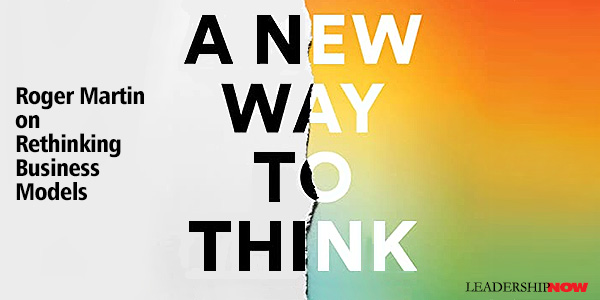
A BUSINESS MODEL reflects the way we think a business works. They shape how we conduct business. We have models related to all business activities, from production, pricing, and selling to how we motivate, hire, and manage. Every business model is based on assumptions that, too often, we don’t make explicit. And that’s where we can get into trouble. Roger Martin reports in A New Way to Think that when a model—“a given framework, general practice, theory, or way of thinking”—doesn’t seem to be working, we simply double-down on it and try to execute better. “If making execution a priority doesn’t result in better execution, make execution still more of a priority. If your culture doesn’t change in the direction you want, then mandate culture change even more aggressively.” “The models are extraordinarily persistent in the face of ineffectiveness and that is because our use of models to organize our thinking and action is so automatic.” So, we never rethink it. When Martin has been asked to help figure out why something isn’t working as well as the CEO wishes, he says, “It has become clear to me over the years that in nearly every case, the poor results weren’t down to their not working diligently enough in pursuit of their goals, it was because the model that guided their actions wasn’t up to the task.” In 14 self-contained chapters, Martin compares a dominant but often flawed model with an alternative that he believes is more effective and based on better assumptions. He states, “One should always use the best model available, but watch closely to see whether it produces the outcomes that it promised,” he writes. “If it does, keep using it. If it doesn’t, then you should work on creating a better model — one that produces results more in keeping with your goals.” All of the now dominant models make sense and have been used for obvious reasons, but they need to be re-evaluated from time to time. Each topic reveals the underlying assumptions of old and new ways of thinking: 1. Competition
2. Stakeholders New model assumption: To actually create shareholder value, put customers before shareholders. A single-minded focus on profits guarantees you won’t get them. 3. Customers
4. Strategy
5. Data
6. Culture
7. Knowledge Work
8. Corporate Functions
9. Planning
10. Execution
11. Talent
12. Innovation
13. Capital Investment
14. Mergers & Acquisitions
As each chapter is a self-contained real-world story, it allows you to skip to subjects of interest. In that way, it is a management handbook that you can return to again and again according to your circumstances. 
Posted by Michael McKinney at 06:36 AM
06.03.22

“My Band-Aid is Better Than Yours!”
TODAY, far too many leaders are arguing over Band-Aids. They see problems and react with Band-Aids. All around us, we see the result of Band-Aids. Most of the contentious issues of the day are over band-aids. “My Band-Aid is better than yours!” It feels like we’re doing something, but in reality, we’re just putting a Band-Aid on the symptom. Band-Aids are a reaction, not a preventative. Band-Aids are meant to cover a problem with the assumption that there is healing taking place underneath. But as we have seen historically, that just doesn’t happen. We cover it up and walk away, leaving the real issues to fester and grow. Band-Aids cause us to miss the deeper dscussions we need to be having. Band-Aids answer the wrong questions. For too many decades, we have been applying Band-Aids without doing anything to heal the issue. Most rules and laws are just Band-Aids. Most noticeably and pervasively, in the 1960s, we began to look the other way. And now we have nightmares. We are reaping the consequences of that decision. We have a character problem. We have a values problem. It’s character that we need to be addressing. And character issues are first dealt with in the home. And that includes the use of rules. But foundational rules that guide behavior in the right direction. Not a codebook of rule upon rule—Band-Aids to fix what’s not happening in the first place. Fundamentally, character development is a parenting issue. By coddling generations of youth, even well-intentioned coddling, we have set them and society up for failure. Coddling makes people think that the problems are “out there” instead of “in-here”—inside all of us. Safe spaces only serve to deepen divides. Seeking out and understanding differences builds an appreciation of the positive intent of others. Our most vocal leaders in government, communities, and families raise their voices for Band-Aids because they either don’t know or do not have the courage to lead the hard choices that need to be made to address character issues. Taking the time to understand and deal with the underlying issues doesn’t stand a chance under the pressure to attenuate and appease the uninformed, loud, and reactionary voices. The problem is when you are working on character issues, it looks like you are doing nothing. Ironically, you are doing everything. Dealing with the real problem is not just time-consuming but painful. It means admitting that we’re wrong, that we’ve gotten off track. Band-Aids push the responsibility for a real solution off on someone else. When in reality, the solution is with each of us. But that’s hard. Sadly, we applaud people who march for Band-Aids and never deal with the issues. We need a different kind of march. March for being better people. March for inclusiveness. March for self-control. March for real-world relationships. March for civility. March for character. There’s something disingenuous about getting in someone’s face and screaming about controlling them. Love doesn’t make you do crazy things. Love forgives. Love is patient. Unchecked emotions may trigger compromising thoughts, but character keeps those thoughts in check. We created the world we live in both individually and as a society. If we don’t like it, it’s time to change who we are—not make more rules. More rules will not stop people who are inclined to disregard them anyway. It happens in families and organizations, but it has never been so obvious as it is in government. Instead of leading, they are reacting. It shouldn’t come as a surprise, I guess. As Maslow pointed out, if the only tool you have is a hammer, you treat everything as if it were a nail. If you are a lawmaker, you try to address every problem with a law. Even then, most laws are not designed to solve a problem but to push an agenda. We’re just kicking the can down the road. We need to stop arguing over Band-Aids and come together on the underlying character issues. We divide over Band-Aids instead of uniting over character. The values that molded the Greatest Generation, for example, have been slowly brushed aside for more superficial values. Character doesn’t just happen; it is forged. We have neglected our responsibilities in the faith that posting another law will solve the problem. Times like these provide us with the opportunity to rediscover our values—values we have forgotten. For now, what can we do? Start where we can do the most good. Start with ourselves. Start at home. We must discipline ourselves before we attempt to restrict others—self-regulation. We must order our own circumstances before we go to work on others. Perhaps we all need to put away the Band-Aids and focus on the source of the issue. Then we’ll find that we don’t need another rule.
Posted by Michael McKinney at 07:13 AM
06.02.22

Leading Thoughts for June 2, 2022
IDEAS shared have the power to expand perspectives, change thinking, and move lives. Here are two ideas for the curious mind to engage with: Professor emeritus of medicine Jon Kabat-Zion on problem-solving: “In general, if you feel you’ve got a problem to solve that is ‘out there’ and you don’t necessarily see or want to see any possible relationship between the ‘you’ who is trying to solve the problem and what the problem actually is, you may wind up not being able to see the problem accurately, in its fullness. You therefore may unwittingly be contributing to maintaining the undesired situation rather than allowing it to evolve and perhaps dissolve.” Source: Presence: Human Purpose and the Field of the Future Writer David Chapman on how to improve your thinking: “Learn from fields very different from your own. They each have ways of thinking that can be useful at surprising times. Just learning to think like an anthropologist, a psychologist, and a philosopher will beneficially stretch your mind.” Source: How to Think Real Good Look for these ideas every Thursday on the Leading Blog. Find more ideas on the LeadingThoughts index.
Posted by Michael McKinney at 07:36 AM
06.01.22

First Look: Leadership Books for June 2022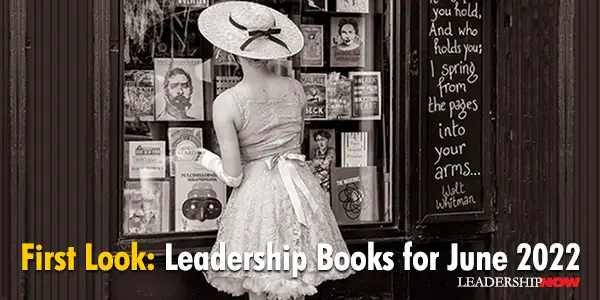
HERE'S A LOOK at some of the best leadership books to be released in June 2022. Be sure to check out the other great titles being offered this month.
In The Power of One More, you'll: • Learn why you're closer to your dreams and goals than you think and why using The Power of One More strategies will help you cross the finish line in whatever race you're running; • Understand the psychology and science of how to use The Power of One More in every part of your life will help you solve problems and achieve levels of success you never thought possible; • Discover time-tested and unique solutions to challenges that will remove the mental roadblocks you've been battling for years
Drawing insights from its strategies, structure, and history, Seo teaches readers the skills of competitive debate, and in doing so shows how they can improve their communication with friends, family, and colleagues alike. He takes readers on a thrilling intellectual adventure into the eccentric and brilliant subculture of competitive debate, touching on everything from the radical politics of Malcom X to Artificial Intelligence. Seo proves beyond a shadow of a doubt that, far from being a source of conflict, good-faith debate can enrich our daily lives. Indeed, these good arguments are essential to a flourishing democracy, and are more important than ever at time when bad faith is all around.
Is power the last dirty secret or the secret to success? Both. While power carries some negative connotations, power is a tool that can be used for good or evil. Don’t blame the tool for how some people used it. If fully understood and harnessed effectively, power skills and understanding become the keys to increasing salaries, job satisfaction, career advancement, organizational change, and, happiness. In 7 Rules of Power, Jeffrey Pfeffer, professor of organizational behavior at the Stanford University Graduate School of Business, provides the insights that have made both his online and on-campus classes incredibly popular—with life-changing results often achieved in 8 or 10 weeks. Rooted firmly in social science research, Pfeffer’s 7 rules provide a manual for increasing your ability to get things done, including increasing the positive effects of your job performance.
In Building Trust: Exceptional Leadership in an Uncertain World, Darryl Stickel, one of the world’s foremost experts on trust, outlines his groundbreaking Trust Unlimited blueprint for building trust. Stickel moves away from the traditional approach of influencing people’s willingness to trust—the con artist’s tactic—to employing one or more of ten levers, which leaders can “pull” to close the gap between how much they are trusted and how much they should be. This approach also makes them more trustable and increases trust where it is deficient. Detailed case studies provide examples of his Trust Unlimited model in action.
What is the difference between a startup that makes it, and one that crashes and burns? Behind every story of success is an unfair advantage. But an Unfair Advantage is not just about your parents' wealth or who you know: anyone can have one. An Unfair Advantage is the element that gives you an edge over your competition. This groundbreaking book shows how to identify your own Unfair Advantages and apply them to any project. Drawing on over two decades of hands-on experience, Ash Ali and Hasan Kubba offer a unique framework for assessing your external circumstances in addition to your internal strengths. Hard work and grit aren't enough, so they explore the importance of money, intelligence, location, education, expertise, status, and luck in the journey to success. From starting your company, to gaining traction, raising funds, and growth hacking, The Unfair Advantage helps you look at yourself and find the ingredients you didn't realize you already had, to succeed in the cut-throat world of business.
Leading lightly is about looking at what you do through a radical new lens. It’s a way to powerfully transform your performance, make better decisions, gain greater self-awareness, and develop the capacity to manage your work and life with enduring ease and clarity. An alternative to the everyday stress, pace, challenges, and burdens that weigh you down, Leading Lightly shows you how to shift your mindset, live lighter, and optimize your effectiveness. Part leadership, part mental fitness, part health and wellness guide, this book empowers you to work at your best and operate at your fullest potential.
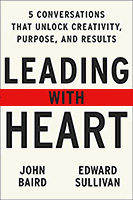 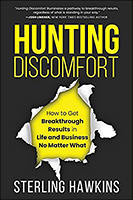 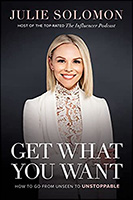
“To add a library to a house is to give that house a soul.” — Cicero
Posted by Michael McKinney at 06:54 AM
|
BUILD YOUR KNOWLEDGE


How to Do Your Start-Up Right STRAIGHT TALK FOR START-UPS 
Grow Your Leadership Skills NEW AND UPCOMING LEADERSHIP BOOKS 
Leadership Minute BITE-SIZE CONCEPTS YOU CAN CHEW ON 
Classic Leadership Books BOOKS TO READ BEFORE YOU LEAD |
|